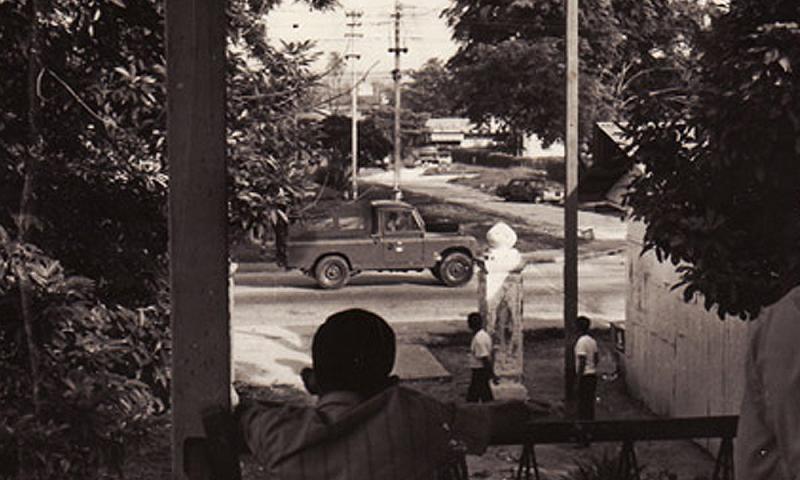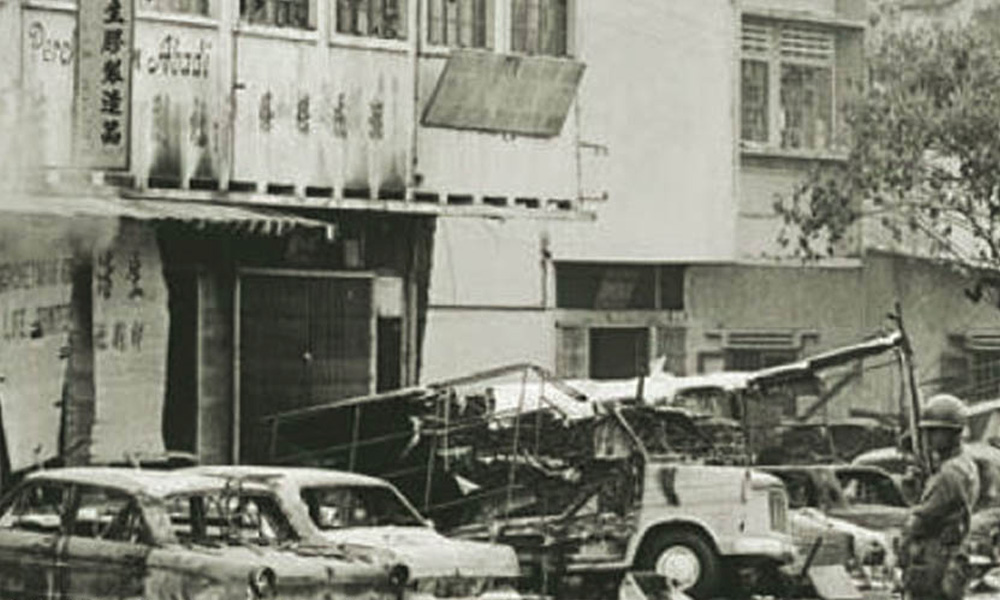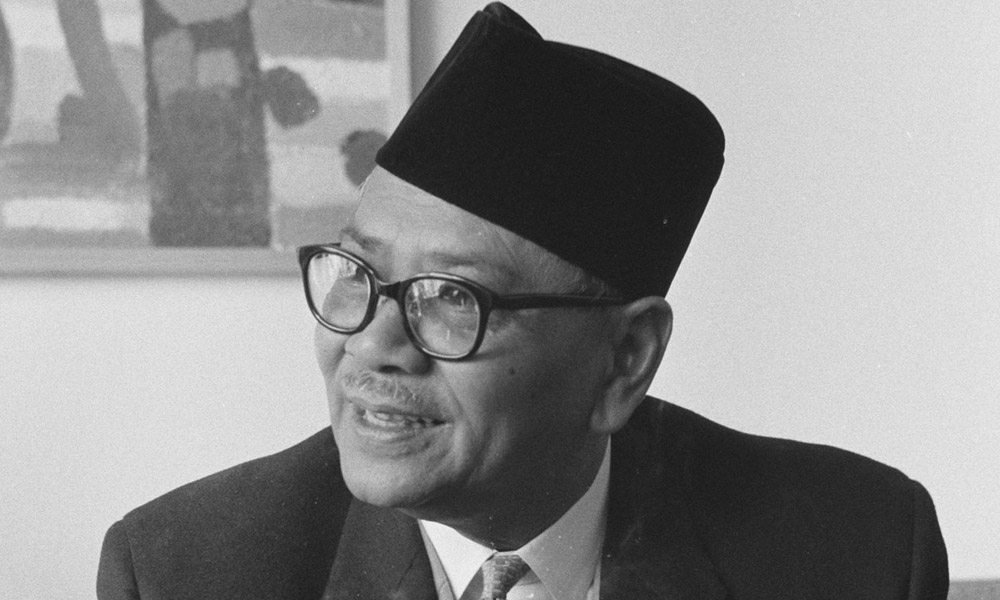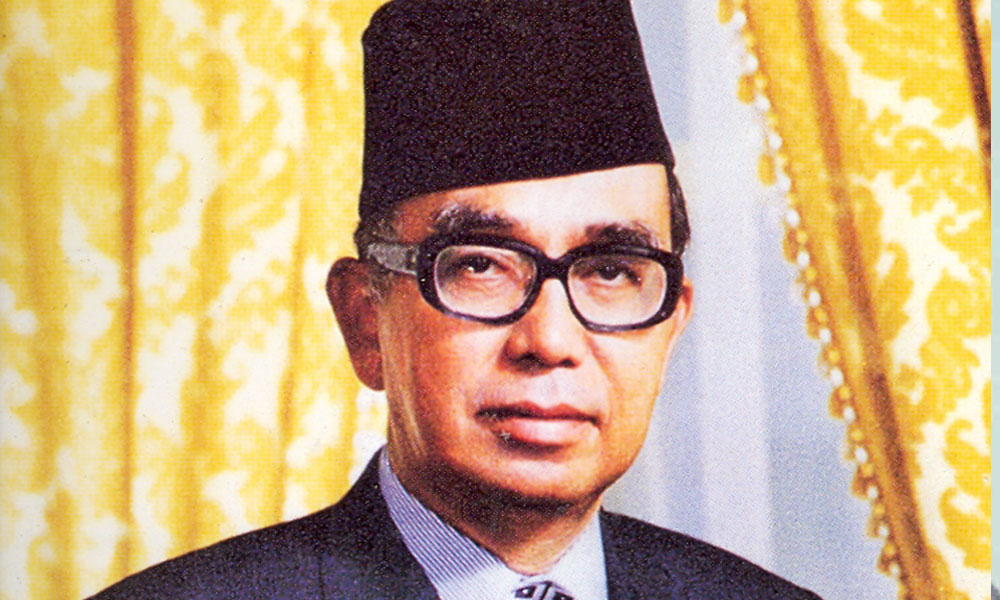
P Gunasegaram
Published: May 14, 2024
COMMENT | Yesterday marked the 55th anniversary of the riots of May 13, 1969, in Kuala Lumpur. It happened three days after the May 10 election of that year, the third after Malaysia’s independence on Aug 31, 1957.
Most Malaysians, over 90 percent, have no memory of it - it was that long ago. But it remains etched indelibly in the psyche of the nation with unprecedented racially motivated killings. Official figures count 196 dead, unofficial ones at several hundred.
It was an epic tragedy for the nation, less than a dozen years old, paving the way for sweeping controversial political and economic changes which are still the topics of intense, emotional debate today.
Five years ago to the day, on May 14, 2019, I wrote an article for Malaysiakini titled “Forgetting May 13” on the 50th anniversary of the riots. “Forgetting” for me meant forgiving and moving on, ensuring we never allow others to manipulate race that way again.
I based the article on an earlier one I wrote 10 years before that, in 2009, the 40th anniversary, carrying the same title when I was managing editor at The Star. There is a reference to that article in this blog but the article has since been removed, together with my other articles, for reasons best known to the newspaper.
Published: May 14, 2024
COMMENT | Yesterday marked the 55th anniversary of the riots of May 13, 1969, in Kuala Lumpur. It happened three days after the May 10 election of that year, the third after Malaysia’s independence on Aug 31, 1957.
Most Malaysians, over 90 percent, have no memory of it - it was that long ago. But it remains etched indelibly in the psyche of the nation with unprecedented racially motivated killings. Official figures count 196 dead, unofficial ones at several hundred.
It was an epic tragedy for the nation, less than a dozen years old, paving the way for sweeping controversial political and economic changes which are still the topics of intense, emotional debate today.
Five years ago to the day, on May 14, 2019, I wrote an article for Malaysiakini titled “Forgetting May 13” on the 50th anniversary of the riots. “Forgetting” for me meant forgiving and moving on, ensuring we never allow others to manipulate race that way again.
I based the article on an earlier one I wrote 10 years before that, in 2009, the 40th anniversary, carrying the same title when I was managing editor at The Star. There is a reference to that article in this blog but the article has since been removed, together with my other articles, for reasons best known to the newspaper.

Both articles advocated putting the incident behind us and moving on in the true spirit of multi-racialism in the country.
But after 15 years, I have changed my mind about forgetting the past with increasing accounts not being true to the events. It is important to remember the roots of the incident before we can put it behind us and find appropriate solutions going forward. That’s part of closure.
Conflicting accounts
The official line is that it was a spontaneous outpouring of emotion by the Malay community in response to grave provocation by opposition parties who had made much progress in the 1969 election.
Others say it was a carefully orchestrated plot by the ruling Alliance, dominated by Umno and supported by MCA and MIC, to stay in power with the ostensible aim of stability for the country. Somewhere in between lies the truth.
There was a victory demonstration by the opposition on May 12, 1969, for which, uncharacteristically, police permission was given. Some accounts say that Tunku Abdul Rahman, the then-prime minister who stepped down in 1970 after the May 13 riots, did not know about the permission given.
Subsequently, Umno wanted to hold its victory parade and plans were made for a big one at the then Selangor chief minister Harun Idris’ residence, in Kampung Baru, Kuala Lumpur on May 13. There are conflicting accounts after this.
Some maintained that rumours of killings and other news resulted in the crowd gathered at Harun’s house going out of control. Others talk of a controlled event to express outrage which went out of control. Others speak of a conspiracy.

Tunku Abdul Rahman
Malaysiakini ran an excellent series of articles in 2019 which it republished on its site yesterday titled “May 13, never again: The 1969 riots that changed Malaysia”.
In addition to this, I would recommend reading this note from Malaysiakini titled “May 13: Why Malaysiakini revisited an old, but persistent, wound” which explains why it wrote the series, giving useful references at the end.
Those interested in understanding May 13 should read these accounts of the riots which make fascinating, insightful, frank, but disturbing reading. They are honest accounts of what happened, many of them from eyewitnesses.
Setbacks
Following the polls on May 10, 1969, in Peninsular Malaysia, indications were that the ruling Alliance made up of Umno, MCA, and MIC were on the brink of losing their two-thirds majority in Parliament for the first time ever.
In the peninsula, at the close of voting on May 10, they had won 66 out of 114 seats, or 59 percent, far short of the 67 percent required for a two-thirds majority.
Not only that. They lost Kelantan again to PAS and Penang for the first time since independence to the brand new Gerakan which had made major inroads. The state assembly in Selangor was tied at 14-14, while in Perak, no single party or coalition had a majority. In Kedah and Terengganu too, there were setbacks.
That was an unprecedented setback for the Alliance, the predecessor to today’s BN, and a very unexpected surge in opposition strength which caught both sides of the divide in total surprise.
The Sabah and Sarawak elections were subsequently held in June and July 1969. Even with that, it was a little short of a two-thirds majority after the polls, winning two-thirds only with a pledge by Sarawak’s SUPP to join it, as pointed out in this letter to the editor titled “Alliance didn't lose two-thirds in 1969”.
In 1970, Abdul Razak Hussein became the second prime minister. He brought in one Dr Mahathir Mohamad, a strong critic of Tunku, back into Umno. Mahathir, who lost in 1969, won a parliamentary seat in the 1974 election and became education minister, till now the fastest rise ever in Umno.
Malaysiakini ran an excellent series of articles in 2019 which it republished on its site yesterday titled “May 13, never again: The 1969 riots that changed Malaysia”.
In addition to this, I would recommend reading this note from Malaysiakini titled “May 13: Why Malaysiakini revisited an old, but persistent, wound” which explains why it wrote the series, giving useful references at the end.
Those interested in understanding May 13 should read these accounts of the riots which make fascinating, insightful, frank, but disturbing reading. They are honest accounts of what happened, many of them from eyewitnesses.
Setbacks
Following the polls on May 10, 1969, in Peninsular Malaysia, indications were that the ruling Alliance made up of Umno, MCA, and MIC were on the brink of losing their two-thirds majority in Parliament for the first time ever.
In the peninsula, at the close of voting on May 10, they had won 66 out of 114 seats, or 59 percent, far short of the 67 percent required for a two-thirds majority.
Not only that. They lost Kelantan again to PAS and Penang for the first time since independence to the brand new Gerakan which had made major inroads. The state assembly in Selangor was tied at 14-14, while in Perak, no single party or coalition had a majority. In Kedah and Terengganu too, there were setbacks.
That was an unprecedented setback for the Alliance, the predecessor to today’s BN, and a very unexpected surge in opposition strength which caught both sides of the divide in total surprise.
The Sabah and Sarawak elections were subsequently held in June and July 1969. Even with that, it was a little short of a two-thirds majority after the polls, winning two-thirds only with a pledge by Sarawak’s SUPP to join it, as pointed out in this letter to the editor titled “Alliance didn't lose two-thirds in 1969”.
In 1970, Abdul Razak Hussein became the second prime minister. He brought in one Dr Mahathir Mohamad, a strong critic of Tunku, back into Umno. Mahathir, who lost in 1969, won a parliamentary seat in the 1974 election and became education minister, till now the fastest rise ever in Umno.

Abdul Razak Hussein
Razak forced a coalition of all parties (the DAP under Lim Kit Siang refused to join) for the 1974 election in August which he won with a resounding majority - 135 seats out of 154, an incredible 88 percent of seats. Less than one and a half years later, in January 1976, Razak died of leukaemia in the UK.
Hussein Onn took over as prime minister, selecting Mahathir as his deputy. Mahathir moved from party outcast to deputy prime minister in just seven years since being expelled from Umno. In 1981, at Hussein’s retirement, Mahathir became prime minister, the first non-lawyer to assume the position.
The ruling party held the reins quite firmly until 2008, nearly four decades after May 13, 1969, when Selangor fell to the opposition for the first time along with other states Penang, Kelantan, Kedah, and Perak.
Then came May 2018, just one year short of a half-century from May 13, 1969. BN lost to Pakatan Harapan - a historic defeat for the ruling party.
It has been a rather interesting story but there still needs to be an unvarnished story about May 13, 1969, itself and why it happened. That will help heal the injury caused to the psyche of the nation so as to move forward with purpose and confidence.
It requires honesty, gumption, and brave new writers, as well as a new maturity not yet here to put the historical record right. We can’t depend on a government, where Umno Baru calls many shots, to do right by all Malaysians, especially on May 13 - it has to be an effort independent of the government.
P GUNASEGARAM was 17 when May 13, 1969, happened. He lived in Sentul less than 3km from the epicentre of the riots in Chow Kit Road and well remembers the stories, the rumours, the fears, and threats floating about then.
Razak forced a coalition of all parties (the DAP under Lim Kit Siang refused to join) for the 1974 election in August which he won with a resounding majority - 135 seats out of 154, an incredible 88 percent of seats. Less than one and a half years later, in January 1976, Razak died of leukaemia in the UK.
Hussein Onn took over as prime minister, selecting Mahathir as his deputy. Mahathir moved from party outcast to deputy prime minister in just seven years since being expelled from Umno. In 1981, at Hussein’s retirement, Mahathir became prime minister, the first non-lawyer to assume the position.
The ruling party held the reins quite firmly until 2008, nearly four decades after May 13, 1969, when Selangor fell to the opposition for the first time along with other states Penang, Kelantan, Kedah, and Perak.
Then came May 2018, just one year short of a half-century from May 13, 1969. BN lost to Pakatan Harapan - a historic defeat for the ruling party.
It has been a rather interesting story but there still needs to be an unvarnished story about May 13, 1969, itself and why it happened. That will help heal the injury caused to the psyche of the nation so as to move forward with purpose and confidence.
It requires honesty, gumption, and brave new writers, as well as a new maturity not yet here to put the historical record right. We can’t depend on a government, where Umno Baru calls many shots, to do right by all Malaysians, especially on May 13 - it has to be an effort independent of the government.
P GUNASEGARAM was 17 when May 13, 1969, happened. He lived in Sentul less than 3km from the epicentre of the riots in Chow Kit Road and well remembers the stories, the rumours, the fears, and threats floating about then.

Karma paid with compound interest to the mastermind of this riots
ReplyDelete